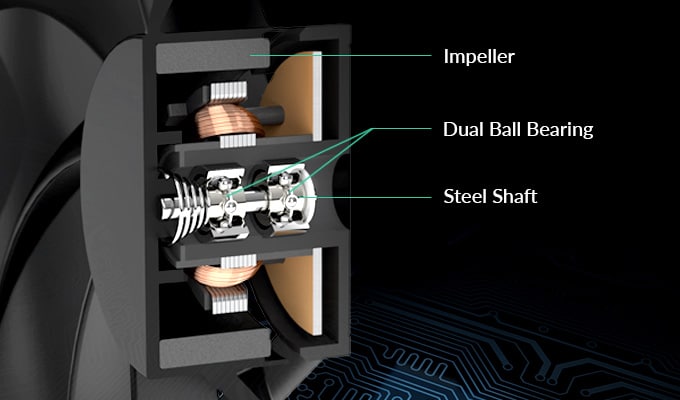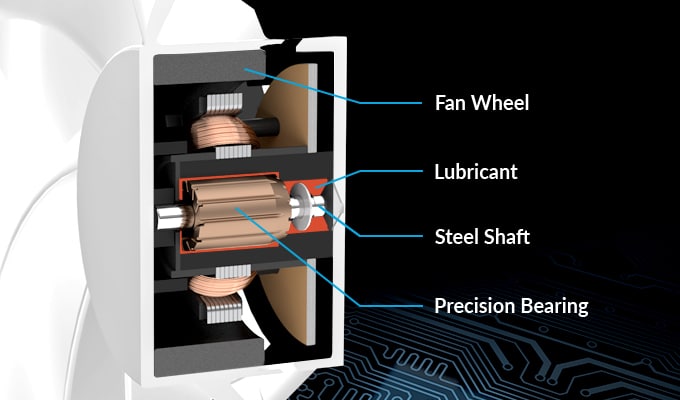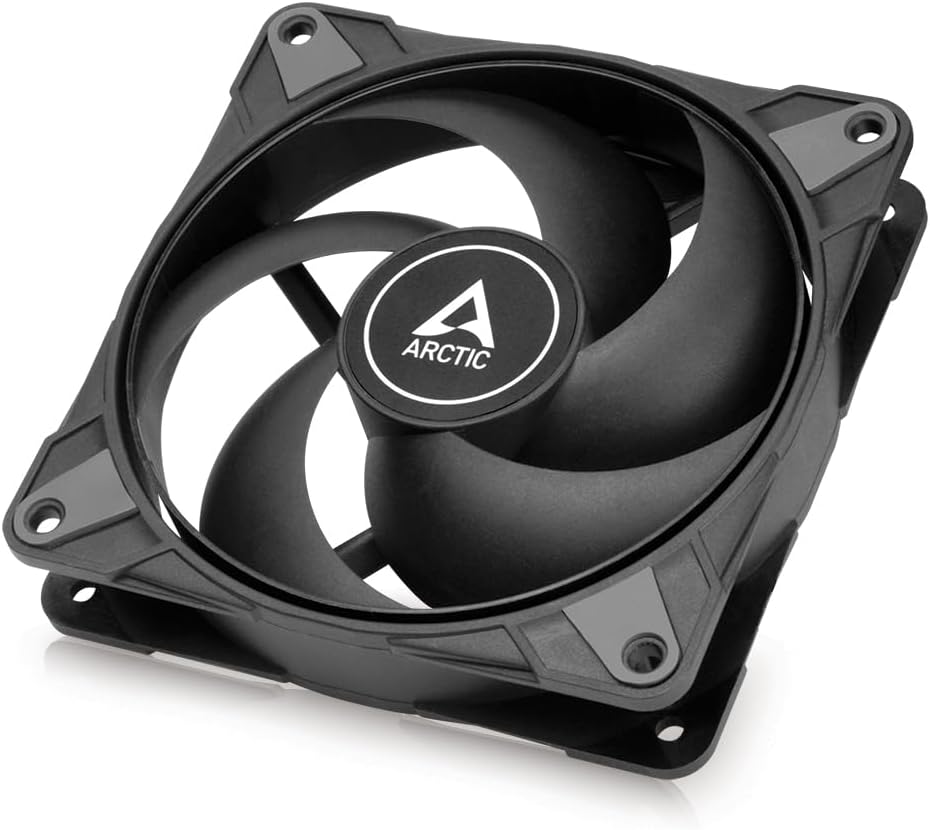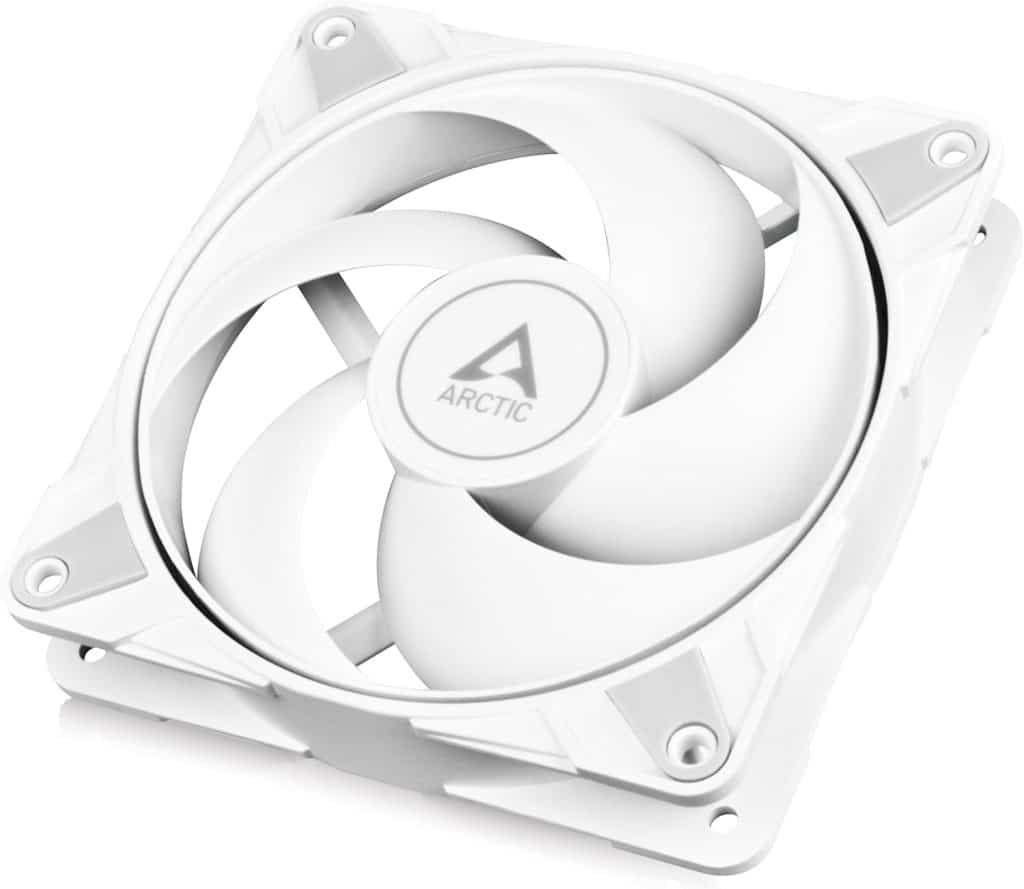The Arctic P12 Max is one of the most affordable high-speed fans, offering high performance while it is supported by an extra-long warranty. It comes in two versions, the black one featuring double ball bearings and the white version with a fluid dynamic bearing. Read today’s review to find out which is the best!
The Arctic P12 Max (Black/DBB) is sold at 10 dollars, making it one of the most affordable 120mm fans in today’s market. The white version of this fan is sold at Amazon for 14.5 dollars, which is a notably higher price tag for just a color change. But in fact, besides the color, the bearing also changes from a double ball (Black edition) to a fluid dynamic one (White edition). The strange thing is that all claimed performance values remain the same, including noise output, with only the bearing being different, which is pretty weird. This is why I was triggered to get a different P12 Max Black sample (I have already evaluated this fan) and compare it with a P12 Max White. This way, I will achieve two things: I will check on the sample variation between the P12 Max Black samples, and I will also check on the performance and noise output differences between the Black and White versions. Lastly, based on the results, I will be able to inform you whether it is worth spending 45% more to get the White version instead of the Black one.
Both P12 Max versions have a maximum speed reaching 3300RPM, up to 81.04 CFM, and up to 4.35 mmAq static pressure (official specifications). The maximum airflow doesn’t look that impressive, given the fans’ high speed, but the static pressure is pretty high.
Besides the obvious differences, from the illustrations above, the bearing seems of a rifle type and not a “true” fluid dynamic. With over 500.000 hours of mean time to failure (MTTF), without Arctic specifying the operating temperature, though, this is among the most reliable fans I have ever encountered, on paper at least. This is why Arctic also provides a six-year warranty. The weird part is that the DBB and FDB versions have the same warranty period. Typically, double ball bearings are way more tolerant to increased temperatures than fluid dynamic ones, but Arctic assumes that these fans won’t operate at increased operating temperatures, so it provides the same warranty to them.
Cybenetics Fans Database
- Model Name: Arctic P12 Max
- Material (Frame & Impeller): Plastic
- Connectors: 4-pin PWM
- Fan Speed PWM: 200–3300 rpm PWM Controlled (0 rpm below 5% PWM)
- Fan Airflow (Max): 81.04 cfm | 137.69 m³/h
- Operating Ambient Temperature: 0–40 °C
- Static Pressure (Max): 4.35 mm-H2O
- Fan Noise Level (Max): 37.5 dBA
- Fan Bearing Type: Dual Ball (Black version), Fluid Dynamic (White version)
- Bearing durability: > 500.000 Hours
- Fan Rated Voltage: 12 VDC
- Fan Rated Amperage: 0.29A
- Fan Rated Wattage: 3.48W
- Fan Weight: 184 gr
- Dimensions (W x H x D): 120 x 120 x 25mm
- Daisy-Chain Capable: Yes
- Power Cable length: 400mm
- Price (excluding VAT): $10 (Black version), $14.5 (White version)
- Warranty: 6-year








The double ball bearing model is gone in the US. Arctic decided to change it to FDB.
I saw. I can no longer find P12 Max with double ball bearing, whether in the black or white version. That is, the black one is now FDB too!
Black: https://www.arctic.de/en/P12-Max/ACFAN00280A
White: https://www.arctic.de/en/P12-Max/ACFAN00293A
Note that the bearing is the same (double ball bearings) in both colorways. Is it the end of the double ball bearing?
I guess, the metal screeching at lower RPM caused a lot of complaints 😛
First of all, many thanks Aris!
Well, I was expecting bigger difference at lower RPMs. In the higher I expected very similar results, as it is, because the main source of noise, which covers other sounds, is created by a moving air mass that radiates a sound wave into the environment. And since the geometry of propeller is the same, there should be no major differences.
This 2nd DBB fan is not so disturbing at 10% (although it’s very near) as the 1st DBB (spike at 5 kHz). However, at 25% it is even more annoying than 1st one because of the harmonics/resonance, which starts between 2nd and 3rd second in the recording.
FDB has much nicer sound at 10% and 25% PWM level.
One note: I have one hypothesis as to why the 1st DBB has higher power consumption than the 2nd. The spike at 5 kHz reminds me of grinding/scraping metal on metal. The bearings may not be sufficiently lubricated, or the tolerance of the bearing balls is not tight enough … but its only a guess 😀
for sure there was something wrong with the first sample, since its peak RPM on the longwin were also off.